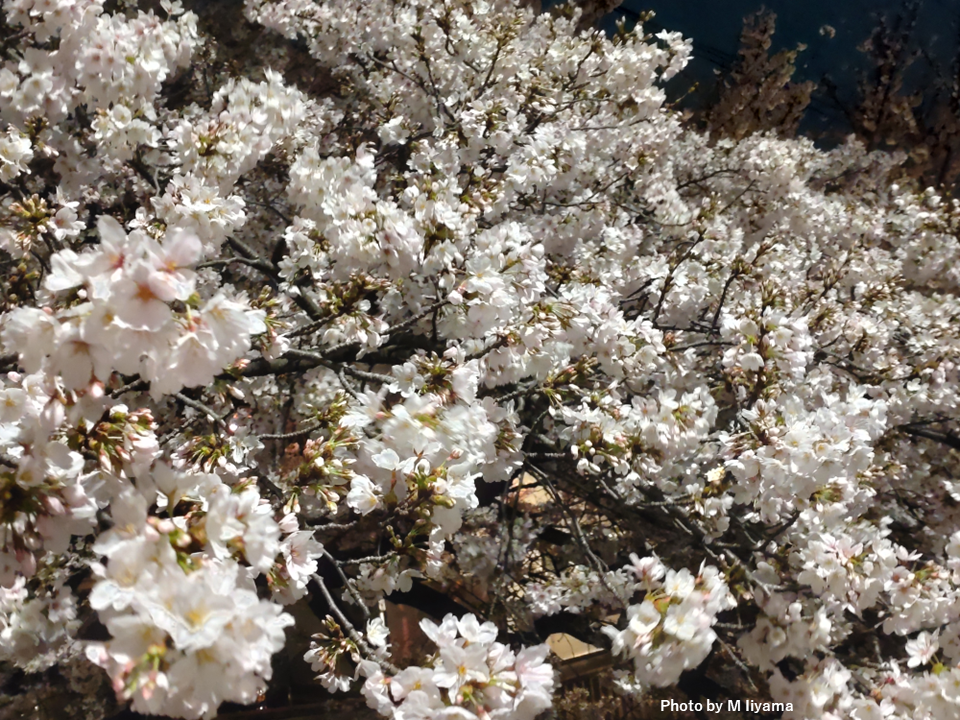Pick Up
988. Blooming and Phenology of Cherry Blossoms in Japan

988. Blooming and Phenology of Cherry Blossoms in Japan
This year, the cherry blossoms in Tokyo bloomed on March 29, more than two weeks later than last year and five days later than the normal bloom date (March 24) due to the influence of temperature and sunlight.
Phenology is the study of seasonal cycles and their variations, and how the cycles that plants and animals create to survive are affected by seasonal and interannual changes in climate. It has been attracting increasing attention in recent years because of its importance in analyzing the effects of climate change on plants and animals. Phenological studies that examine the cherry blossom blooming season in Japan, which spans a wide range of latitudes and has various environmental conditions, are regarded as one of the most reliable sources of information for investigating the long-term effects of climate change.
A study summarizing the blooming of cherry blossoms in Japan found that records in ancient diaries and chronicles of Kyoto’s cherry blossom festivals date back to the 9th century, reconstructing weather information in the past and reflecting regional changes due to rising temperatures associated with global warming and urbanization. It is perhaps the world's oldest existing phenological record showing evidence of a warming trend. The Kyoto record shows that cherry trees bloom much earlier today than they did 1,200 years ago, and information on the location of cherry trees around Osaka indicates that they bloom earlier in the city center than in the suburbs. In addition, fixed-point observations at a garden on Mt. Takao showed that early blooming among varieties indicates differences in adaptation to temperature fluctuations.
On the other hand, if weather conditions such as this year’s unusually warm winter and large daily temperature fluctuations become the norm, it may become more difficult to predict cherry blossom blooming. Cherry blossom buds are formed in the summer before blooming, but they go dormant for the rest of the year and awaken from dormancy when the temperature rises sharply after receiving sufficient low-temperature stimulation. Based on this mechanism, weather information companies and others have set February 1st as the "date of breaking dormancy" for the cherry blossom specimen trees at Yasukuni Shrine in Tokyo, and have been predicting the bloom date as the date when the total daily maximum temperature reaches 600°C since then. This year, however, while the winter was the warmest on record until mid-February, the coldest days of winter and rainy weather continued into March, and no blooming was observed even after the total temperature reached over 700°C in late March. According to the Japan Weather Association, the high temperatures from November to January this season have resulted in a delayed dormancy break by a few to 10 days.
The mechanism of flowering alone is not simple, as plants such as cherry trees do not simply respond to the rise in spring temperatures, but also need a certain degree of winter cold to turn on the flowering switch. The adaptation of plants and animals to a changing climate may also become more complex. As climate change is expected to intensify extreme weather events, it will be necessary to conduct more detailed research on the climate adaptation mechanisms of plants and animals.
References
Richard B. Primack, Hiroyoshi Higuchi, Abraham J. Miller-Rushing (2009) The impact of climate change on cherry trees and other species in Japan, Biological Conservation, Volume 142, Issue 9, https://www.sciencedirect.com/science/article/pii/S0006320709001517
Yasuyuki Aono, Keiko Kazui (2007) Phenological data series of cherry tree flowering in Kyoto, Japan, and its application to reconstruction of springtime temperatures since the 9th century. International Journal of Climatology. https://doi.org/10.1002/joc.1594
Contributor: IIYAMA Miyuki (Information Program)
